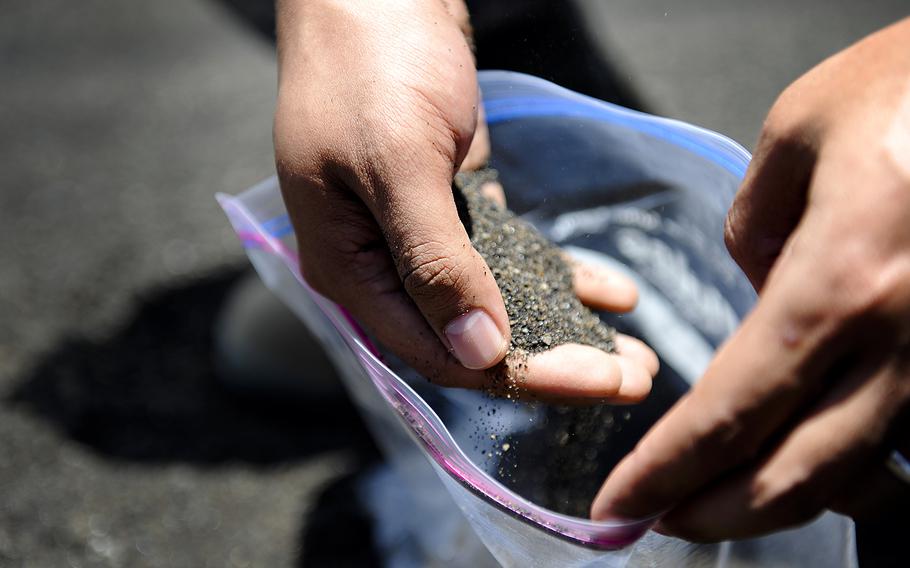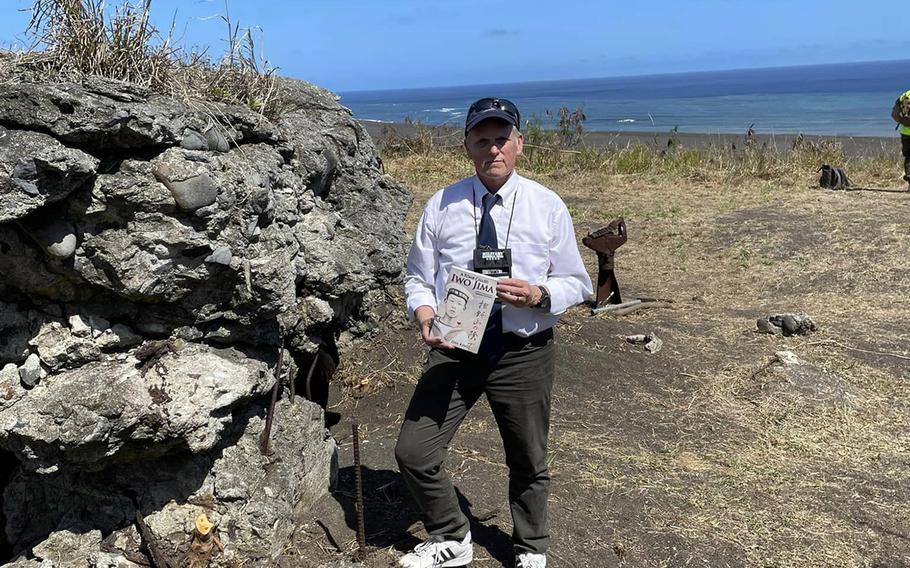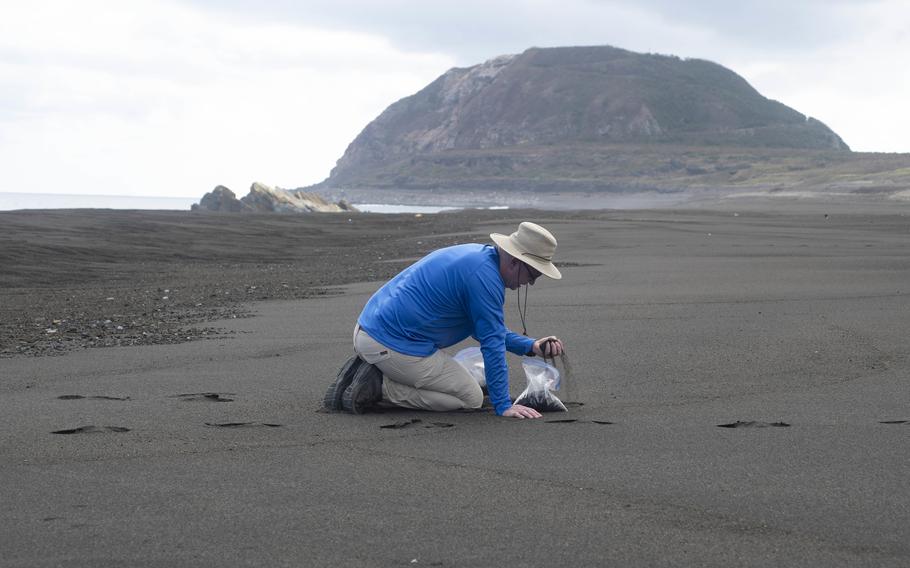Asia-Pacific
‘Remains of my father’: Iwo Jima sand brings closure to families of fallen Japanese soldiers
Stars and Stripes August 31, 2023

A U.S. airman from Kadena Air Base, Okinawa, collects black volcanic sand during a tour of Iwo Jima, also known as Iwo To, July 26, 2012. (Maeson Elleman/U.S. Air Force)
CAMP FOSTER, Okinawa — A group of U.S. and Japanese historians are breaking a taboo and distributing black sand from Iwo Jima to relatives of Japanese soldiers who perished in the bloody World War II battle.
Texas-based author Dan King, a volunteer with the Iwo Jima Association of America, partnered in April with Japanese researchers Ko Fujiwara and Tetsuya Inada to give 15 families approximately one ounce of sand each, Fujiwara said by phone Thursday.
The families accepted the sand in lieu of their relatives’ remains, which have not been recovered.
Iwo Jima, an island approximately 750 miles southeast of Tokyo, was the scene of heavy fighting at the end of World War II. It is now the site of a Japan Self-Defense Force base and off-limits to most visitors. The U.S. Navy has conducted carrier-landing training on the island for Carrier Air Wing 5 since 1991.

Texas-based author Dan King, a volunteer for the Iwo Jima Association of America, poses during a visit to the island on March 23, 2023. (Dan King)
Japanese citizens who are granted access to the island also known as Iwo To are prohibited from removing the black volcanic sand that covers its beaches, a spokesman from Japan’s Ministry of Health, Labor and Welfare said by phone Wednesday. No such rule bars American visitors, many of whom are in the U.S. military.
Some government officials in Japan may speak to the media only on condition of anonymity.
Makiko Harada, 86, was just a child when her father, Kumao Nei, died on Iwo Jima, she said by phone Thursday. She has been to the island to pray for him but brought nothing home in remembrance.
“I felt very happy when I received this sand,” she said. “I feel like this sand came home as the remains of my father.”
King — author of “A Tomb Called Iwo Jima: Firsthand Accounts from Japanese Survivors” — first met Fujiwara, a military historian from Oita prefecture, in 2019 while researching for a book, King said by email Tuesday. The pair kept in touch and began talking again in the run up to this year’s annual Battle of Iwo Jima ceremony, the Reunion of Honor, which took place March 25.

A U.S. airman from Kadena Air Base, Okinawa, collects sand from Invasion Beach on Iwo Jima, April 20, 2022. (Gary Hilton/U.S. Air Force)
Fujiwara asked if King would make an offering of rice and water from Miyazaki prefecture for the families of the deceased after the event, King said. He brought back sand from the beach in return.
“I was a little afraid,” Fujiwara said. There is a myth that those who take the sand are cursed; Self-Defense Force troops even clean their shoes when leaving the island, he added.
Fujiwara decided to dedicate the gift at Miyazaki Gokoku Shrine. Inada, after speaking with a family group, decided to pass the sand on to relatives of the dead.
The family group’s director, Tadashi Sekiya, called a dozen families he knew had lost loved ones at Iwo Jima and planned a ceremony in the shrine’s main hall on July 8, he said by phone Wednesday. Another two families saw news coverage of the event and contacted Sekiya.
The sand was handed over in clear, plastic discs that resembled a hockey puck, Sekiya said.
It could possibly be the first time Japanese people have received sand from Iwo Jima, Fujiwara said. He said only time will tell if they are able to give sand to families in other prefectures.
“If we continue this activity, maybe what used to be a taboo will stop being so, and maybe we will be allowed to take sand from the island, too,” he said.